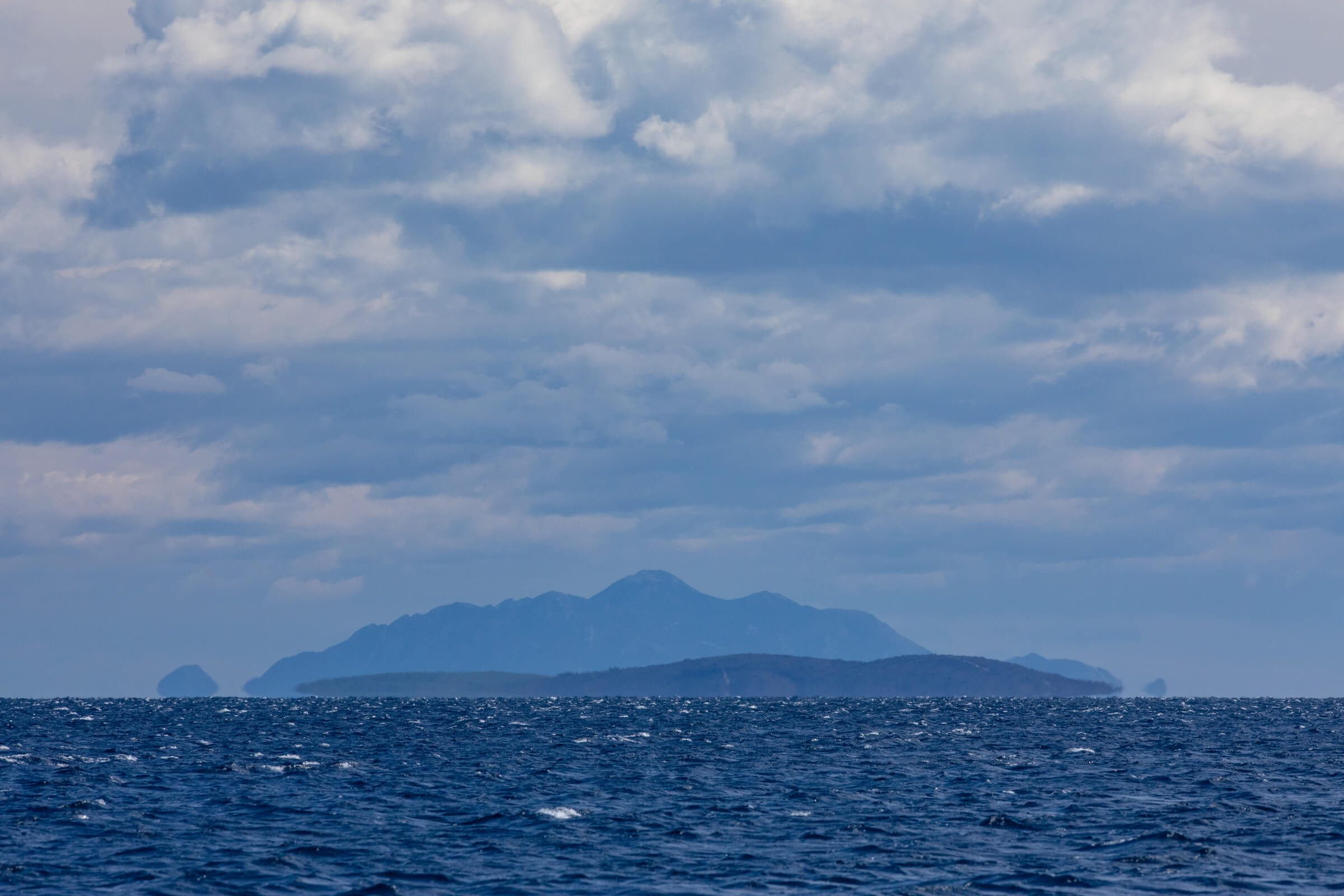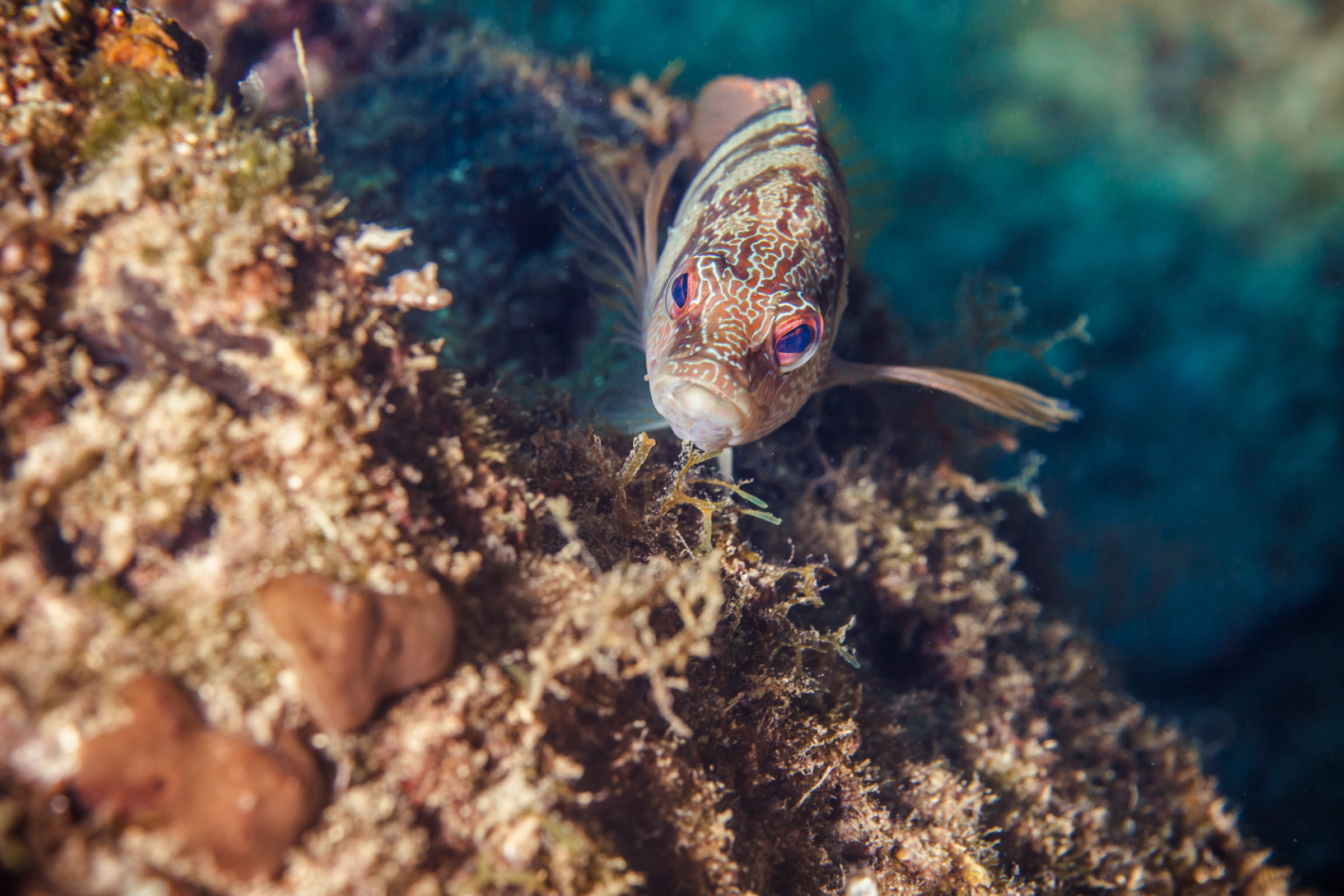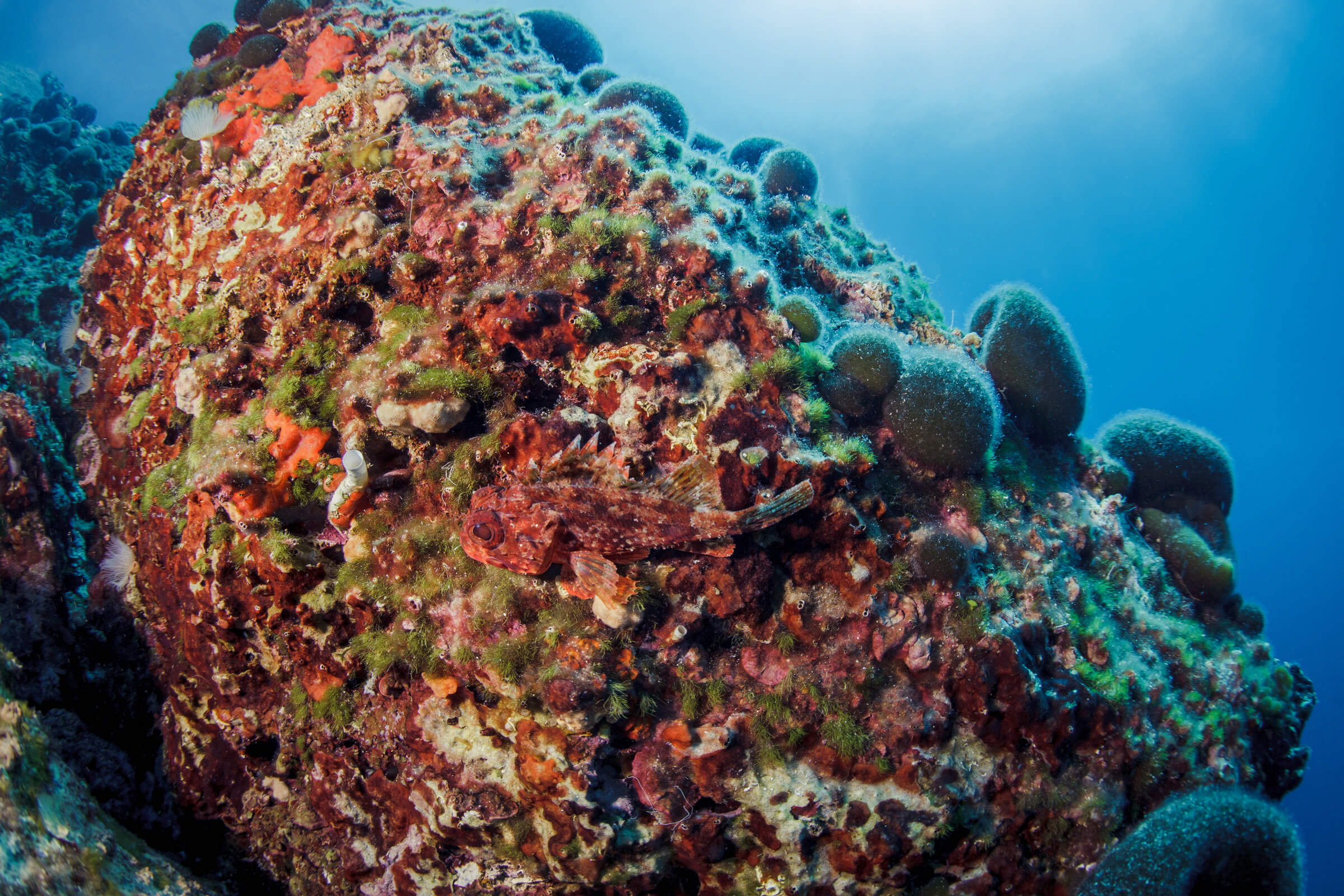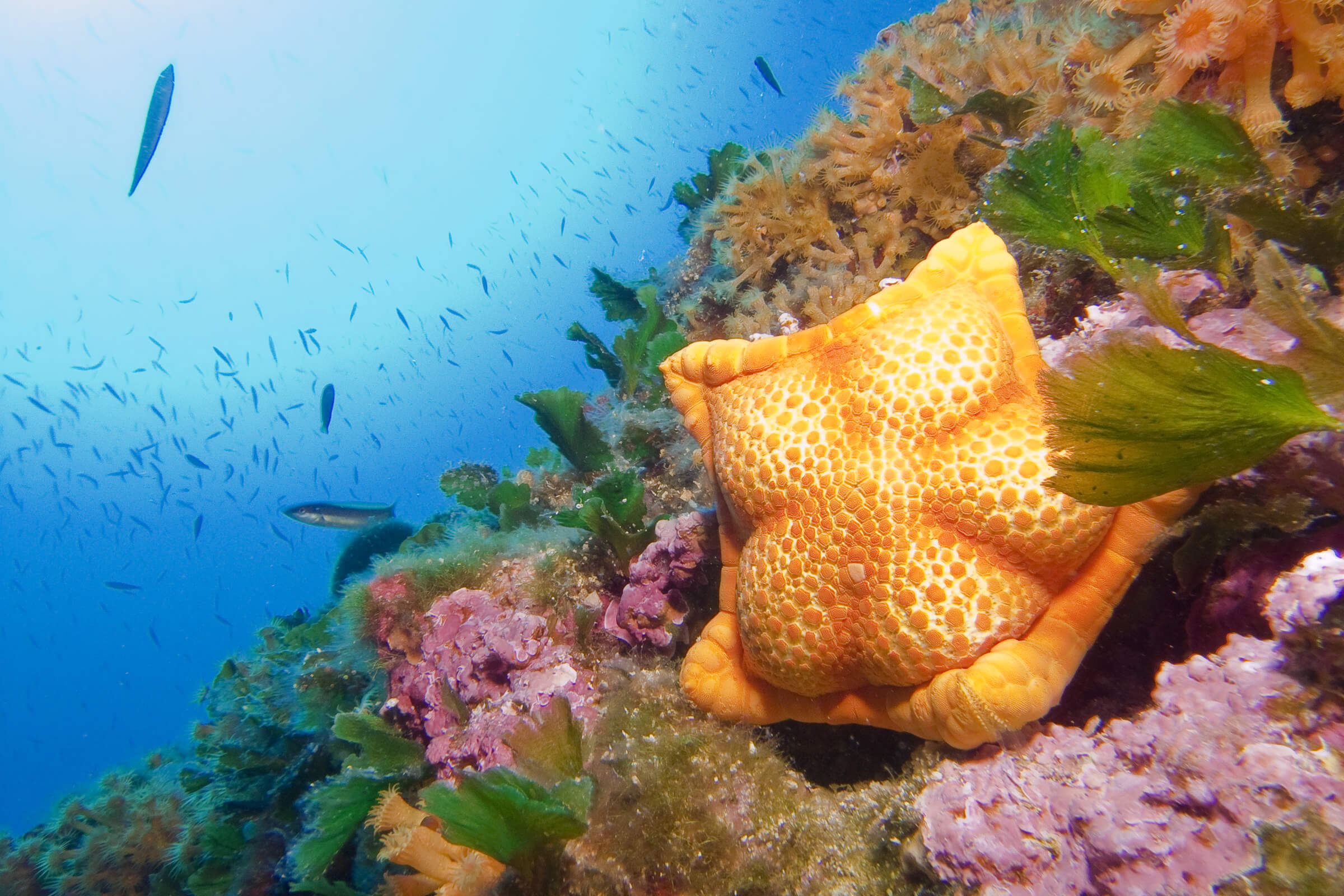Split Oceanographic Physicists Gave Lectures to Children from the Islands
August 26, 2021 - "Oceanographers on the Island" is the name of a project led by Split oceanographic physicists with the mission of organizing free workshops for primary school children and scientific cafes for older audiences on everything related to the sea.
Slobodna Dalmacija reports that a group of Split marine experts came to the Dalmatian islands, where through workshops and activities they dedicated themselves to share their knowledge and teach local children and adults about the marine ecosystem, as well as raising awareness about caring for the sea. All this is organized by five enthusiasts from Split faculties and institutes and funded by the European Research Council and the Croatian Science Foundation.
Workshops and scientific cafes were held at three locations: on Korčula, Ugljan and Hvar. In Vela Luka, doc. dr. sc. Jadranka Šepić introduced the topic of the Vela Luka tsunami, which surprised all residents on the first day of the summer of 1978. In Čeprljanda on Ugljan, under the leadership of dr. sc. Natalija Dunić talked about climate change, and in Vrboska on Hvar, doc. dr. sc. Jadranka Šepić spoke about Varbovac snails.
In addition to the mentioned, Krešimir Ruić, mag. phy., Marko Mlinar , B.Sc. ing., as well as Maja Karlović , mag. edu., were also part of the enthusiastic group of Split oceanographic physicists that came to the islands to share their knowledge through workshops.
Both large and small, through lectures and workshops, realized that marine physics is not a specter, but something quite interesting, and they also learned something about ecology.
''We told the children that they are the guardians of the sea, and if any of them is a future sea physicist, no one is happier than us'', Maja Karlović told to Slobodna Dalmacija.
Elementary school students measured the temperature of the sea and air, learned about sea currents, and given the good response and satisfaction of the organizers, next summer such workshops could be enjoyed by children from other islands.
You can learn more from ''Oceanografi na otoku'' on their official Facebook page.
For more on lifestyle in Croatia, follow TCN's dedicated page.
Salinity Measurements of the Adriatic Sea Record an Unprecedented Increase
August 23, 2021 - Are the high levels of salinity in the Adriatic a threat to fisheries and marine flora and fauna? Recent salinity measurements show an unprecedented increase, and this is a red flag.
Through a report by Novi List, scientific advisor to the Ruđer Bošković Institute Dr. Ivica Vilibić, analyzes the results of an investigation that has been conducted since 2017, investigating high levels of salinity measurements in the Adriatic Sea and the impact on fisheries, as well on the marine fauna and flora.
Temperature - which has also risen in recent decades - affects the living world. Namely, the Adriatic is becoming home to species of warmer seas, which entered and are entering from the Red Sea into the eastern Mediterranean through the Suez Canal, and will be brought to the Adriatic by currents, says Dr. sc. Ivica Vilibić
The Adriatic is saltier than ever before since salinity has been monitored - are the results of research by Croatian and Italian scientists, published in the prestigious journal Frontiers by Marine Science, which deals with the biology of the sea and water.

Photo: Mario Romulić
In this interdisciplinary research, led by Dr. sc. Hrvoje Mihanović from the Institute of Oceanography and Fisheries from Split, and with dr. Sc. Ivica Vilibić from the Ruđer Bošković Institute, researchers from the University of Split and Zagreb, and the National Institute of Oceanography and Applied Geophysics in Italy also participated.
Researchers point out that the continuity of salinity measurements in the Adriatic has existed since the 1950s, to the present day, on several climatological profiles in the northern and central Adriatic, and on the profile from Rovinj to the Po River in Italy and on the Palagruža threshold salinity is measured monthly or seasonally. these researches were the basis of many findings from oceanography.
''Such long time series are actually rare in the world and invaluable in today's era of climate change'', it was pointed out in the announcement of the Ruđer Bošković Institute, on the occasion of the publication of the research results.
During the research, the scientists analyzed a number of available data, and the analysis included measurement data by marine multiparameter probes, autonomous vertical-sampling floats (so-called ARGO floats), remotely controlled oceanographic submarines (so-called gliders), satellites that measure sea level, as and data obtained by an oceanographic model of the Mediterranean that assimilates satellite and other measurements and therefore provides the highest quality representation of three-dimensional oceanographic fields.
This research is funded by the HRZZ projects ADIOS, MAUD, BivACME and ISLAND, CAAT, and HIDROLAB projects funded through the European Structural and Investment Funds, the MOCCA project funded through the European Maritime and Fisheries Fund, and the ArgoItaly program funded by the Italian Ministry of University and Research.
The occurrence of extremely high salinity measurements was recorded in 2017 when in the Southern Adriatic and on the Palagruža threshold the concentration of more than 39 per mille of salt in seawater was measured, which was the first time that such high values were measured in the Adriatic Sea layer, to a depth of thirty feet.
According to the Institute, it is common in the much saltier and warmer Levant, where the saltiest water in the Mediterranean, the so-called Levantine intermediate water, is created. In October 2017, the salinity measurements in the surface layer on the Palagruža threshold reached record values, which were more than 39.1 per mille. In addition, with minor oscillations, high salinity in the first two hundred meters of the sea has remained in the central and southern Adriatic until today. At the moment, the salinity measurements in the central part of the southern Adriatic are higher than 38.8 per mille in the entire water column, and along the surface, it reaches 39.15 per mille.
Causes of salinity measurements increase include:
- Climate change
- Natural changes in the circulation in the Ionian Sea
- The reduced inflow of fresh water from rivers flowing into the Adriatic in the period of one year before the occurrence of high salinity
- The inflow of solar energy to the sea surface during summer and early autumn, when the weather is warmer than average and with little wind
''This sudden increase in salinity measurements recorded since 2017 is partly caused by climate change and partly by natural changes in the circulation in the Ionian Sea. Namely, in the last ten years, an exceptional increase in salinity has been recorded in the eastern Mediterranean, and these water masses have begun to overflow into the Adriatic. This increase in salinity measurements, as well as the constant increase in salinity that we have seen in the Adriatic in the last hundred years since the measurements began, have certainly been caused by climate change. In addition, there are natural oscillations of salinity in the Adriatic, which change salinity upwards or downwards every 5 to 10 years, and we are currently in a period of slightly increased salinity due to currents in the northern Ionian Sea'', says Ivica Vilibić, one of the research participants.

Photo: Mario Romulić
In addition to these processes, the scientists concluded, the increase in salinity is "due" to the reduced inflow of fresh water from rivers flowing into the Adriatic in the period of one year before high salinity, and the cause of reduced inflow is reduced rainfall in the wider Adriatic and basins. the rivers that flow into it. Another process that increases salinity refers to the pronounced inflow of solar energy to the sea surface during summer and early autumn, when the weather is warmer than average and with little wind, or with weak vertical mixing in the sea column and stratification of the water column on the extremely warmer surface, and a cooler middle and bottom layer. Consequently, a process occurs that involves pronounced evaporation and loss of water from the sea surface.
Regarding the consequences of the appearance of invasive species, one of the most famous and devastating cases took place in the Black Sea, where the finch (Mnemiopsis leidyi) was first observed in the early 1980s. It is a small animal, resembling a jellyfish, seemingly harmless, because it neither has jellyfish-like jellyfish, nor feeds on fish, but in the Black Sea it multiplied in such quantities that it almost completely destroyed the fund of small fish, feeding on plankton, which is why there was enough food for anchovies and sardines, and their disappearance led to the collapse of part of the fishing industry in Turkey, Bulgaria, and Romania. Ribs, under favorable conditions, reproduce at an explosive rate, literally snatching food from small blue fish and other marine organisms that feed on plankton, which has consequences for other marine animals that feed on small blue fish. Ribs have also been spotted in the Adriatic in recent years, for the first time in 2005, in the Gulf of Trieste, but the population appears to be controlled by Beroe ovata, a species of jellyfish that is a major predator of ribfish and prevents their uncontrolled reproduction.

Photo: Mario Romulić
Of the four main processes leading to increased salinity, as many as three have already been documented in the Mediterranean as a direct result of climate change, and scientists warn that they will bring even warmer and drier summers, lower river flows, and consequently stronger surface warming and salinization. As life in the sea, they point out, from plankton to fish to bacteria, is dependent on temperature, salinity, and available nutrient salts, the observed changes will certainly have a significant impact on life in the Adriatic. Such effects have already been recorded and documented in the last few decades, for example, the entry of new fish species, changes in the relationships and abundance of bacterial communities, the extinction of colder sea species.
Vilibić adds that the consequences of the increase in salinity have yet to be thoroughly investigated, but in combination with the warming of the sea, they could be far-reaching for Adriatic species, and
''It is difficult to quantify the impact of increasing salinity on the living world in the Adriatic because the relationships in the food chain are insufficiently known in the current climate. What we do know is that the increase in salinity has a significant effect on the amount and composition of bacterial communities, invisible to the human eye and a significant component of the food chain. Their hitherto unrecorded anomaly was investigated during 2017, but it can be assumed that such a situation continued. In a way, these communities are equivalent to bacteria and microorganisms in our body, which is why we survive in symbiosis - so in the sea, larger individuals are dependent on the entire food chain, the smallest, but how and how much - it is the subject of research. We know too little to say with certainty that increasing salinity will shape Adriatic living communities in the future climate. But what we know better is how temperature - which has also risen in recent decades - affects the living world. Namely, the Adriatic becomes home to species of warmer seas, which entered and enters from the Red Sea into the eastern Mediterranean through the Suez Canal, and are brought to the Adriatic by currents. Let's hope that these changes will not be as strong as in the Black Sea, where the arrival of certain such species caused the collapse of fisheries'', says Vilibić.
The appearance of foreign or rare species in the Adriatic has become more frequent in recent years, with the "movement" of species to which the warmer sea corresponds further and further north being noticeable. This summer, the public's focus was on the appearance of fireflies or sea peacocks, a tropical species characterized by unusually long, venomous spines that, similar to spiders or groupers, cause severe pain in people who are stung.

Photo: Mario Romulić
The firefly arrived in the Mediterranean from the Red Sea, and as an invasive species it appeared in several areas around the world, and as it is a predator that has no natural enemies in the new areas, it has a detrimental effect on smaller fish, crabs, cephalopods and other marine organisms. which it feeds on. In the US state of Florida, there is a whole campaign to catch this invasive species, under the slogan "Eat them to beat them!", Which encourages the local population to consume this, for the environment, as people who they carelessly handle dangerous but supposedly very tasty fish species.
As for the impact on domestic fisheries and mariculture, he says the direct impact of man, through overfishing of marine organisms, is as big a problem as changes in environmental properties.

Dino Stanin/PIXSELL
''In fact, we know more about the former - there are many studies on it - while the impact of climate change on fisheries is still the subject of research. As for mariculture, which is becoming more common in the diet, compared to fish caught outside the cage, it will be easier to adapt to the new climate, because there are species in the oceans that tolerate warm seas and are suitable for farming, such as tuna. So, unlike fisheries, the survival of mariculture is a matter of adaptability to the changing environment, while the survival of fisheries is a matter of acting on environmental changes themselves, the latter being largely beyond our control because climate change will occur regardless of fisheries policy in the Adriatic. In that sense, global actions are needed in relation to the drivers of climate change, according to which we hope that the world will start and start acting'', concludes Vilibić.
For more news about Croatia, click here.
Rovinj Sea Research Centre Celebrating 130 Years of Work
May 18, 2021 - The Rovinj Sea Research Centre turns 130 in 2021. It is the place in Croatia for oceanographic research and all things science related to the preservation of the sea and maritime life.
Established back in 1891 as Berlin's Aquarium Zoological Station, the research Institute is known today as the Rovinj Sea Research Centre (CIM), and last week it celebrated 130 years of work. An affiliate of the Ruđer Bošković Science Institute (IRB), that institute recently reported that CIM currently has 54 employees working in four laboratories, and the centre is heavily involved in numerous impressive scientific projects.
''This includes five projects of the Croatian Science Foundation (HrZZ), worth 5,855 635 HRK, three projects financed within the INTERREG cross border programme (worth 1,326 000 euros), three projects with European structural and investment funds (7,189 531 HRK), and two projects financed within the EU programme for research and innovations, OBZOR 2020, valued at 179,360 euros,“ says the IRB official website.
The section of the IRB page dedicated to CIM adds that the centre offers a multidisciplinary take on the research of the sea, offering both basic and applicable oceanographic research. This includes six areas of interest: processes and dynamics in the food chain, examining the dynamics of water masses, ecology (species and the interrelations of species in both clean and in polluted waters), sea organism research (ecological, physiological, and genetic features of organisms, and a pollution effects study), the monitoring of pollution and sea quality, and finally, the monitoring of eutrophication (a process in which the environment becomes enriched with nutrients which can trigger the development of algae and cause an imbalance in the ecosystem).
Set in the beautiful town of Rovinj on the Istrian peninsula because of the clear waters of the Adriatic sea, CIM is on a mission to preserve marine life and its biodiversity.
CIM truly has a rich tradition, having conducted international systematic research and monitoring of the marine ecosystem of the Northern Adriatic for over 30 years. ''This approach became a model for the regional organisation of the European systematic monitoring of the coastal sea,'' says IRB.
IRB adds that in this long tradition, the Croatian science programme of monitoring the Northern Adriatic played a huge role. Having begun fifty years ago, it developed into the Jadran Project, making Croatia one of the first countries in all of Europe to have developed a systematic approach to the monitoring of the sea.
''Additional confirmation of the tradition and scientific quality of CIM can also be seen in the recent joining of CIM to JERICO – the Joint European Research Infrastructure network for Coastal Observatory, making CIM a partner of some of the most famous European Institutes“, concluded the IRB's explanation.
Learn more about Beaches in Croatia on our TC page.
For more about science in Croatia, follow TCN's dedicated page.
From Rijeka to Space: A Croatian Scientist Creating New Technology to Save the Planet
Based on her previous work, NASA invited Ivona several years ago to join their Ocean Ecology Lab and work on developing a new sophisticated satellite whose launch is planned for 2022


